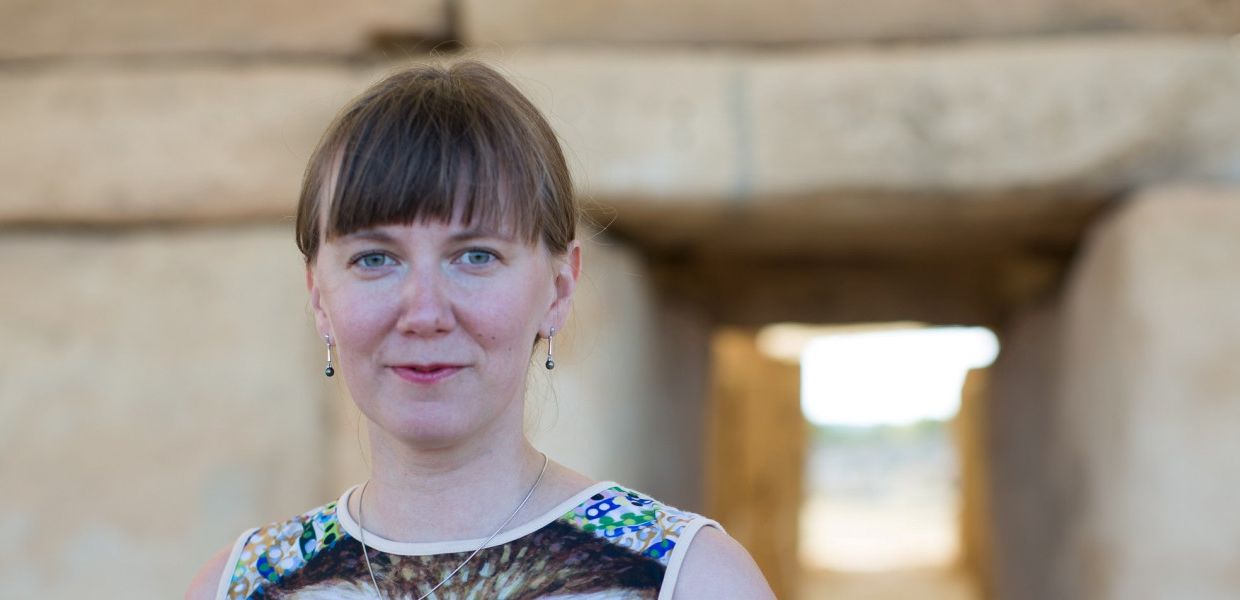Cultural heritage professionals tell us why GLAM collections should be opened up
In the first of our 'open culture' blog mini-series, let's start by seeing what open culture means to members of the Europeana Network Association.

- Title:
- 'What is open culture?' Mirjam Rääbis, Adviser on Museums, Ministry of Culture, Estonia.
- Creator:
- Photograph by Sebastiaan ter Burg
- Date:
- 2017
- Copyright:
- CC BY
We’re now running up to one of our most important events of the year - the Europeana Network Annual General Meeting (6 December - register now!). And to make the most of that, we all need to remind ourselves of what it is we’re doing, why we care about it and why we do it better together. In essence - what is this thing we call ‘open culture’ and what and who is it for?
Back when the sun was still shining strongly, some members of the Network Association got together in Malta to discuss the use of digital cultural heritage in education. We took that opportunity to corner them with a video camera and ask them what they thought about open culture - because that’s what’s at the heart of everything Europeana strives for on behalf of the people and cultural institutions of Europe. Here’s what they said.
What is open culture? from Europeana on Vimeo.
What does open culture mean to you? Tweet us @europeanaeu with #openculture
This video formed part of a global perspective on open culture that we presented with the Open Education Consortium on the Year of Open website in September.
Video transcript:
Open culture is I think culture that’s accessible for everybody.
Open culture is the sea of possibilities but you really need to know what you are looking for in that ocean.
Open culture for me is the future of learning and equality in learning.
With open culture, I understand culture that’s not imposed from above, but it’s also a process of democratization, it’s the culture of the people.
For me, it has a legal connotation so open culture is culture that you can use, that you can reuse and you can share.
We have storage spaces full of objects that people never knew about.
We want to get great quality out there. We want to make our collections, that we are so devoted to in our museum, or any museum, available to anybody who wants or needs them.
This is really a chance to make it accessible.
We’re completely 100% sure of the benefit to society of such projects and such approach.
I think you would need to start also young by exposing students to culture so that later on, they will pay that back in a way, they will go to museums if they are familiar with museums.
Open educational resources are a key factor in this sense, they provide vast material to make this change happen and to enrich teaching.
The objects themselves, they don’t tell you much. You need context, you need help to open it up. To make connections. To tell stories.
It’s not that easy to work with digital materials. I mean, digital objects are having different opportunities. So you really need to provide new kinds of skills.
I think that policymakers, policies and public institutions have to give the way to give an access of the materials, the resources, the cultural resources for all and especially for pupils.
Internet is full of low-quality materials with mistakes. That’s why well-curated websites with educational materials are very important.
We really need to discuss copyright. It’s complicated even for lawyers.
You need to make an effort for educators to understand what they can do and what they can’t do.
Because without knowledge about copyright, you can not use digital objects in an interesting creative way without consequences.
We are continuously competing and bombarded by the pressures of sustainability, financial sustainability.
Best case scenario - all the curators, in all the museums, all the libraries all across Europe or all over the world have dedicated themselves to 20 hours a week just to digitize their collections. And once they’re online with good metadata, and linked open data with highly organized metadata in terms of connecting to other collections, their collections can go out into the big world wide web and be available to everybody.

